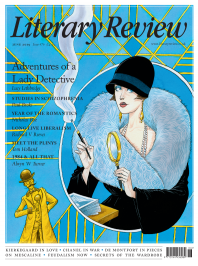Simon Briscoe
Stat Craft
The Art of Statistics: Learning from Data
By David Spiegelhalter
Pelican 426pp £16.99
This is a must-read book about searching for patterns in data to help us make better judgements. It explains myriad statistical concepts, but it does so by placing them in context, using real-world examples often linked to familiar news stories.
David Spiegelhalter, a professor of risk studies at Cambridge, says that his aim here is to use ‘statistical science to answer the kind of questions that arise when we want to better understand the world’. Despite the apparent ease with which he segues from one topic to another, he admits that ‘statistics can be difficult’ and introduces some challenging concepts here. He has sympathy for those of his students who struggle with probability (‘a difficult and unintuitive idea’). This skilfully written book is bound to give readers a better grasp of something many will only half understand. There’s hardly any maths or theory here. Instead, Spiegelhalter concentrates on the statistical building blocks, from the everyday mean and median to more advanced concepts, such as bootstrapping, specificity, posterior distributions and variance. All are defined and explained in clear, plain English.
For a long time, the classic book on this subject was Darrell Huff’s How to Lie with Statistics, published in 1954. That work, however, was barely a hundred pages long (and the pages were smaller). It’s a sign of how much more complex statistics (along with much else) has become

Sign Up to our newsletter
Receive free articles, highlights from the archive, news, details of prizes, and much more.@Lit_Review
Follow Literary Review on Twitter
Twitter Feed
Literary Review is seeking an editorial intern.
Though Jean-Michel Basquiat was a sensation in his lifetime, it was thirty years after his death that one of his pieces fetched a record price of $110.5 million.
Stephen Smith explores the artist's starry afterlife.
Stephen Smith - Paint Fast, Die Young
Stephen Smith: Paint Fast, Die Young - Jean-Michel Basquiat: The Making of an Icon by Doug Woodham
literaryreview.co.uk
15th-century news transmission was a slow business, reliant on horses and ships. As the centuries passed, though, mass newspapers and faster transport sped things up.
John Adamson examines how this evolution changed Europe.
John Adamson - Hold the Front Page
John Adamson: Hold the Front Page - The Great Exchange: Making the News in Early Modern Europe by Joad Raymond Wren
literaryreview.co.uk